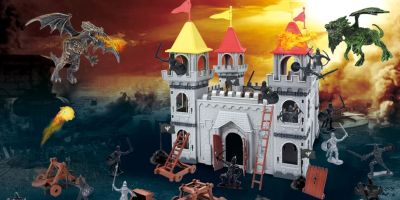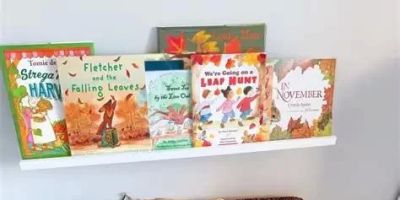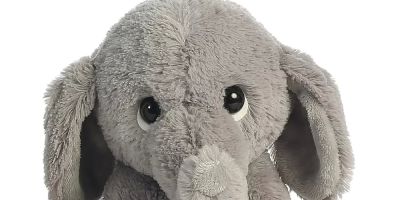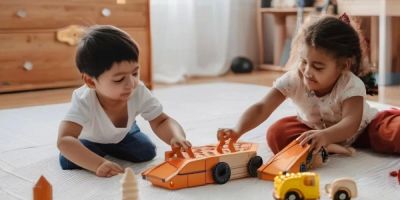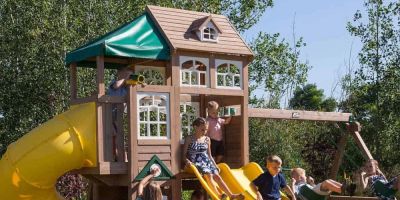Creating the Perfect Toy Wishlist for Your Child's Birthday
As a parent, I’ve often found myself searching for the ideal birthday presents for my child. Choosing gifts that are both enjoyable and beneficial to their development can feel like a balancing act. After several birthday celebrations, I realized that creating a toy wishlist for my child’s birthday would simplify the process, and it’s become a tradition that helps both me and my child get exactly what we want. If you’re wondering how to go about creating a toy wishlist that is thoughtful, practical, and most importantly, fun, I’ll walk you through the steps that have helped me build the perfect list over the years.
1. Understanding Your Child’s Interests and Developmental Stage
The first step in creating a toy wishlist for your child's birthday is understanding their interests and where they are developmentally. For my child’s early years, I focused a lot on age-appropriate toys that would help with learning and skill development. For instance, at age three, my daughter was really into puzzles and building blocks, so I focused on toys that encouraged her problem-solving abilities and hand-eye coordination. I always start by thinking about what excites them at the moment and how the toys will help them grow.
It’s important to keep in mind that children go through various stages of development. At different ages, they need different types of stimulation. If your child is a toddler, sensory toys that promote motor skills and cognitive development are key. As children get older, their interests may shift toward imaginative play, creative activities, or interactive toys that engage their problem-solving skills. I’ve found that asking my child about what they like or what they want can give me valuable insight, but also remembering their developmental needs ensures that I’m choosing the right types of toys.
2. Set a Budget for the Wishlist
Once I have a general idea of the toys my child would enjoy, I set a budget for the wishlist. Birthday presents can add up quickly, especially if multiple people are buying gifts. Creating a budget helps narrow down options and ensures I don’t go overboard. I always make sure to consider the number of presents my child will receive, as well as the overall expense. Setting a budget early on also gives friends and family members an idea of how much to spend, which can make gift-giving simpler for everyone involved.
I find that having a mix of higher-end and more affordable toys is a great way to keep the wishlist balanced. For instance, while I might splurge on a large educational toy that will last for years, I can also include a few smaller toys, such as a set of art supplies or a favorite character figure, to ensure the list remains within my budget. If you’re unsure about pricing, it’s always helpful to look up a few of the toys beforehand to get a sense of their costs.
3. Prioritize Fun and Educational Toys
As I’ve worked to build the perfect wishlist over the years, I’ve learned that it’s best to focus on both fun and educational toys. Some of my best gifts for my child have been those that promote learning while keeping them entertained. For example, I included a building block set one year that not only offered hours of fun but also helped my child improve their fine motor skills. Another year, I added a toy that encouraged early literacy skills, which turned out to be both educational and something they loved playing with every day.
When picking educational toys, I look for ones that promote skills like problem-solving, creativity, and social development. Toys that encourage STEM learning, arts and crafts, or role-playing have been favorites in our household. I always make sure to mix these types of toys with those that provide just plain fun, such as action figures or board games, to create a well-rounded wishlist. This balance has made birthday mornings exciting, as my child gets a combination of toys they can both enjoy and learn from.
4. Involve Your Child in the Process (If They're Old Enough)
When my child reached an age where they could express their preferences, I started involving them in the process of building their birthday wishlist. For my child, the joy of being part of the selection process made the birthday celebration even more special. I would sit down with them and ask about the toys they had in mind. Sometimes, their choices were surprising, and I loved how their little personalities came through as they picked out toys they were genuinely interested in.
Involving my child has not only made the process more fun for them but has also helped ensure that the toys are things they will actually play with. I’d even ask them to rank toys they liked from a list I provided. Doing this made it easier to understand their preferences while also allowing me to steer them toward toys that fit our budget and aligned with their developmental needs.
5. Keep an Eye on Trends and New Releases
Another way I create an exciting toy wishlist is by keeping track of trends and new releases. Kids’ interests evolve quickly, and what was popular last year may not be what they’re interested in now. I often check out toy stores, websites, and online reviews to see what’s trending in the world of toys. Social media platforms and toy blogs are also great resources for discovering new and popular items. For example, I discovered a new line of interactive educational toys through a YouTube review, which was a hit with my child that year.
Staying up-to-date with the latest trends allows me to include toys that are both highly sought after and unique. However, I always balance trendy items with timeless classics. My child has a few favorite toys from previous birthdays that continue to hold their interest, like their beloved building blocks or their favorite stuffed animal. Keeping both types on the list ensures that their birthday toys remain relevant to their current interests while also offering lasting play value.
6. Consider Practicality and Space Limitations
As much as I love adding new and exciting toys to the wishlist, I also consider the practical aspects, such as storage and available space. Over the years, we’ve accumulated plenty of toys, and I’ve learned that selecting toys that don’t take up too much space is just as important as choosing toys that are fun. For instance, large toy sets or multi-part playsets are fantastic but can take up a lot of room. I always ask myself whether the toy will fit into the current play areas in our home, or if I’ll need to reorganize to make space for it.
Additionally, I try to focus on toys that have multiple uses or can be packed away easily. This makes it easier to maintain a tidy space, and it ensures that each toy serves a purpose. One year, we included a toy storage bin set alongside some new art supplies. This combo turned out to be practical and fun, helping to keep toys organized while also sparking creativity.
7. Share the Wishlist with Friends and Family
Once the wishlist is ready, I share it with friends and family members who may be looking for ideas for gifts. I’ve found that this eliminates the guesswork for everyone involved. Instead of giving the same toy over and over again, I can ensure that each person contributes something unique and meaningful to my child’s birthday. When I share the wishlist, I often include links to specific items or details about where to purchase them. This makes it easier for everyone to find exactly what’s needed without confusion.
Not only does sharing the wishlist help in gift-giving, but it also ensures that the gifts my child receives are items they truly want and will enjoy. This reduces the likelihood of receiving duplicates or unwanted items, and it makes birthday mornings all the more exciting when each present feels like it was thoughtfully chosen just for them.

